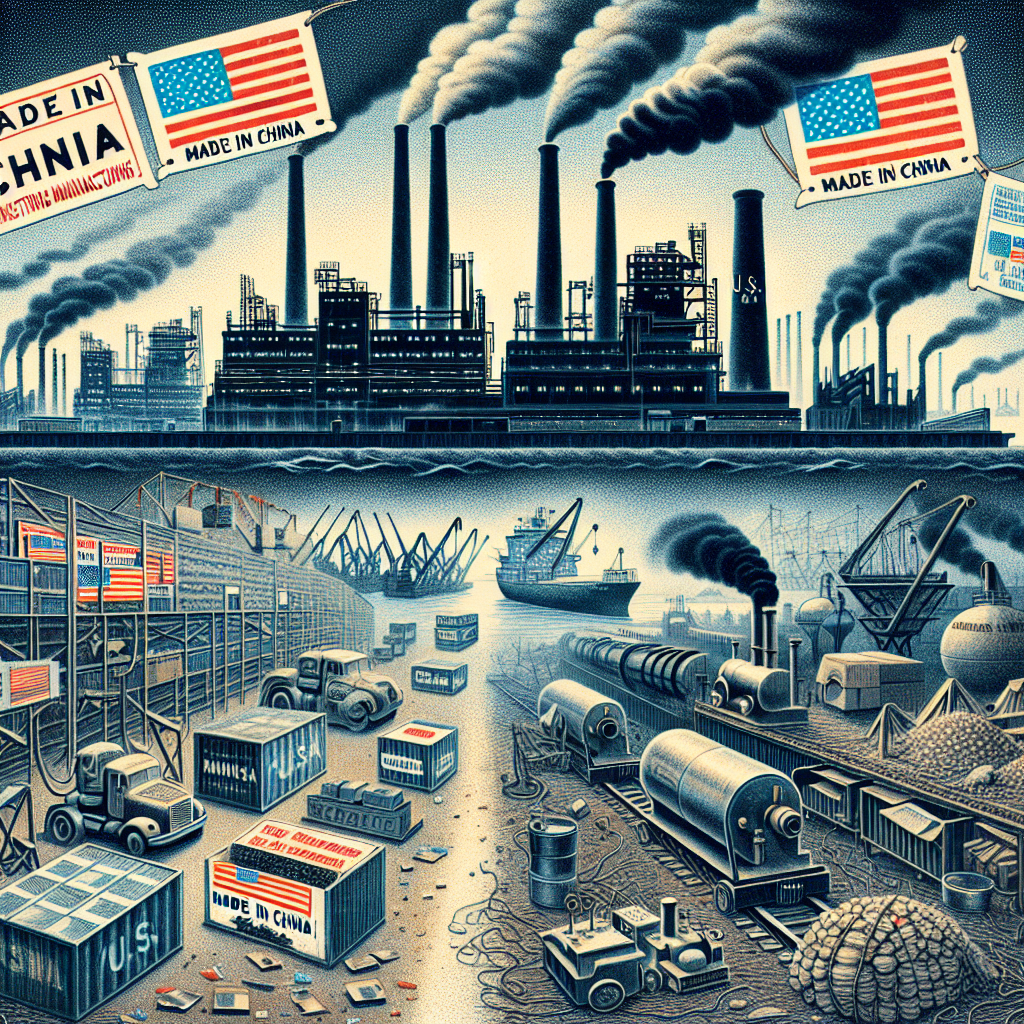The U.S. manufacturing industry is currently facing its most vulnerable moment in decades. In pursuit of low costs and high profits, industries in the United States have moved overseas, handing over key mining and manufacturing sectors to China. Rebuilding the domestic manufacturing supply chain now requires strong and decisive intervention and support from the U.S. government.
Since the end of the Cold War and the dissolution of the Soviet Union in the 1990s, the United States began to excessively rely on the efficiency of globalization. Particularly after China joined the World Trade Organization in 2001, companies gradually abandoned domestic production capacity to seek low costs and high profits, leading to the increasing vulnerability of the U.S. manufacturing industry.
China’s recent restrictions on rare earth exports once again highlight the severity of this issue.
China began weaponizing rare earths in 2011. Following the Biden administration’s chip ban in 2023, China again weaponized rare earths. In the trade war with the Trump administration, China has repeatedly used the “rare earth card”.
Seventy percent of the world’s rare earths are mined in China, with the remaining 30% primarily coming from Myanmar, Australia, and the United States. However, despite 90% of rare earths being mined globally, China processes and refines 90%, with mainland China producing approximately 90% of the world’s rare earth magnets.
Rare earth magnets are crucial materials in modern manufacturing, widely used in electric vehicles, aircraft, semiconductor manufacturing equipment, medical instruments, robots, and various military equipment, serving as essential metal materials supporting the high-tech industry.
It wasn’t until the outbreak of the COVID-19 pandemic that the U.S. realized the risks of hollowing out its manufacturing industry. Bloomberg analysis has shown that the hollowing out of manufacturing and mining not only severely impacts middle-class workers but also weakens national security. Perhaps some Americans have forgotten, but Chinese leaders are keenly aware that the industrial and manufacturing capabilities of the United States were pivotal in the victory of the Allies in World War II.
To revitalize U.S. industries, Americans must make collective efforts. Jamie Dimon, CEO of JPMorgan Chase, pointed out that the U.S. “no longer has time to waste”.
Dimon announced that JPMorgan Chase will establish the “Security and Resiliency Initiative”, investing $1.5 trillion over the next decade to support key mining, energy, and manufacturing industries, including the defense and pharmaceutical sectors, to strengthen the security and self-sufficiency of industrial chains.
Fortunately, the U.S. has begun establishing a complete rare earth supply chain from mining to magnet manufacturing, but at the current pace, it may take several more years to complete. Bloomberg suggests that this process must accelerate, indicating the need for increased government support.
Currently, the U.S. Department of Defense has decided to invest $400 million in rare earth production company MP Materials, marking a new milestone. This month, the U.S. Department of Defense has added an additional $150 million loan commitment and pledged to purchase all rare earth magnets produced by MP Materials, setting a 10-year price floor for neodymium and praseodymium to prevent China from using price cutting as a market weapon.
MP Materials is currently building a rare earth magnet factory in Fort Worth, Texas. Noveon Magnetics operates the only rare earth magnet factory in the United States, located approximately 220 miles away in San Marcos, with an annual planned production capacity of 2,000 tons.
However, China’s monopolization of rare earth resources is a global issue. Besides establishing domestic supply chains, the U.S. should encourage allies such as Canada, Australia, and Mexico to accelerate rare earth production and refining plans, potentially using the investment model of MP Materials by providing allied loans, investments, and price assurances.
For example, the Trump administration once pushed for the construction of a 211-mile road in Alaska to develop the remote Ambler Mining District, and invested in Canada’s Trilogy Metals, mainly extracting metals such as copper, cobalt, gallium, and germanium. Government departments also provided loans and investments to Canada’s Lithium Americas, initiating the Thacker Pass lithium mine development project in Nevada.
Since the 1990s, China has gradually gained a dominant position in the global rare earth supply chain, with most countries standing idly by. China, through subsidies and lax labor and environmental regulations, has lowered rare earth production prices, forcing U.S. and other domestic producers out of business. The perception of the mining industry as highly polluting and dangerous in Europe and the U.S. has led to a lack of support and accelerated industry loss.
Now, China’s strategic cooperation with Russia, North Korea, and Iran poses further national security risks for European and American countries reliant on Chinese rare earth supplies.
As China steadily expands its influence globally, the U.S. has been content importing goods with low inflation, enjoying an era of long-term near-zero interest rates. The U.S. must now confront its reliance on Chinese rare earth supplies, warning that this awkward situation also highlights vulnerabilities in America’s energy policy.
Until autonomous production capabilities are established, prematurely phasing out domestic oil and natural gas in the U.S. and fully relying on China-dominated wind, solar, and lithium battery industries could once again trap America in a strategic “energy dependence on China” dilemma.
Bloomberg’s article warns that the U.S. cannot repeat its reliance on China in other critical economic sectors, handing over energy security to China, which would pose an even greater national security threat.

